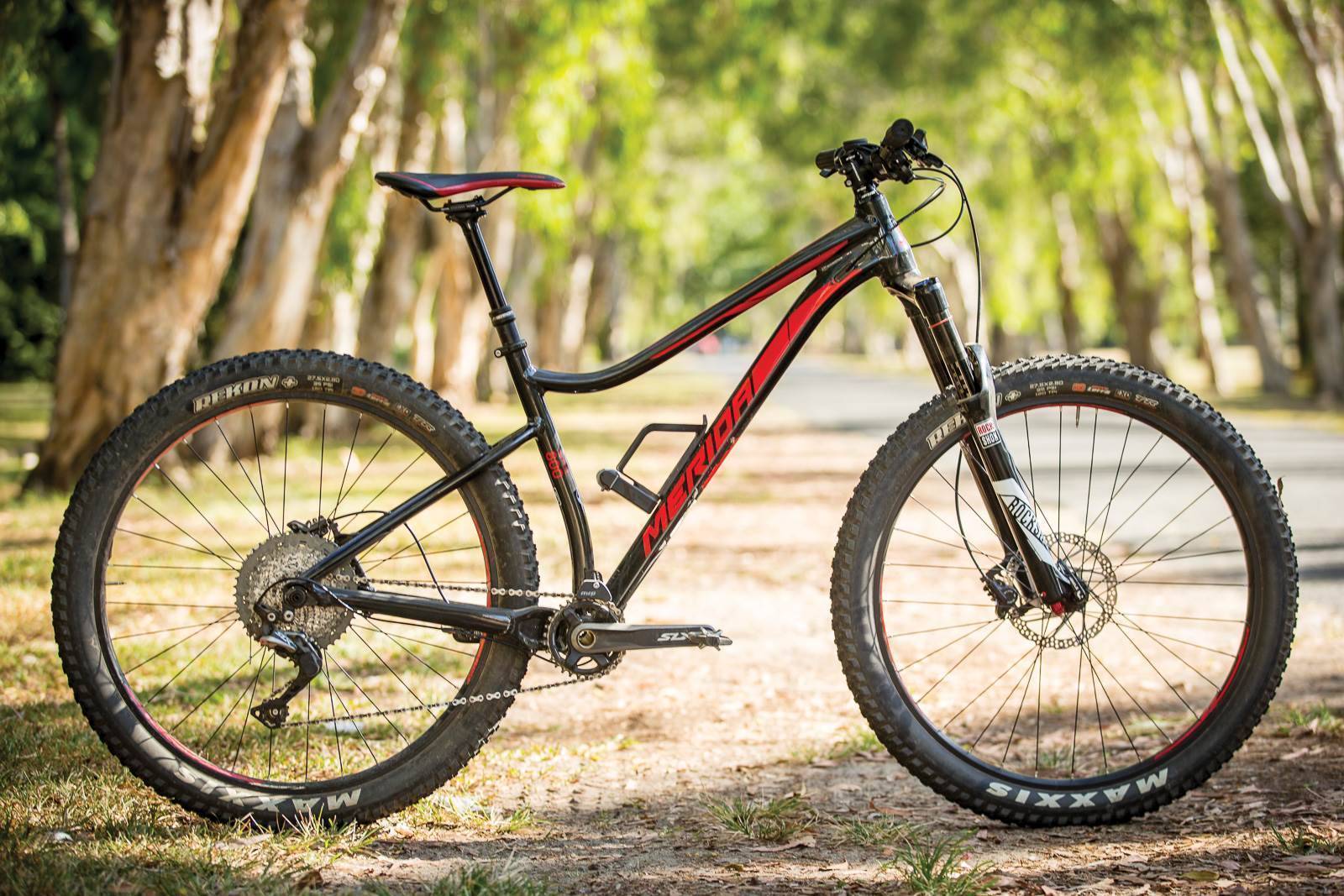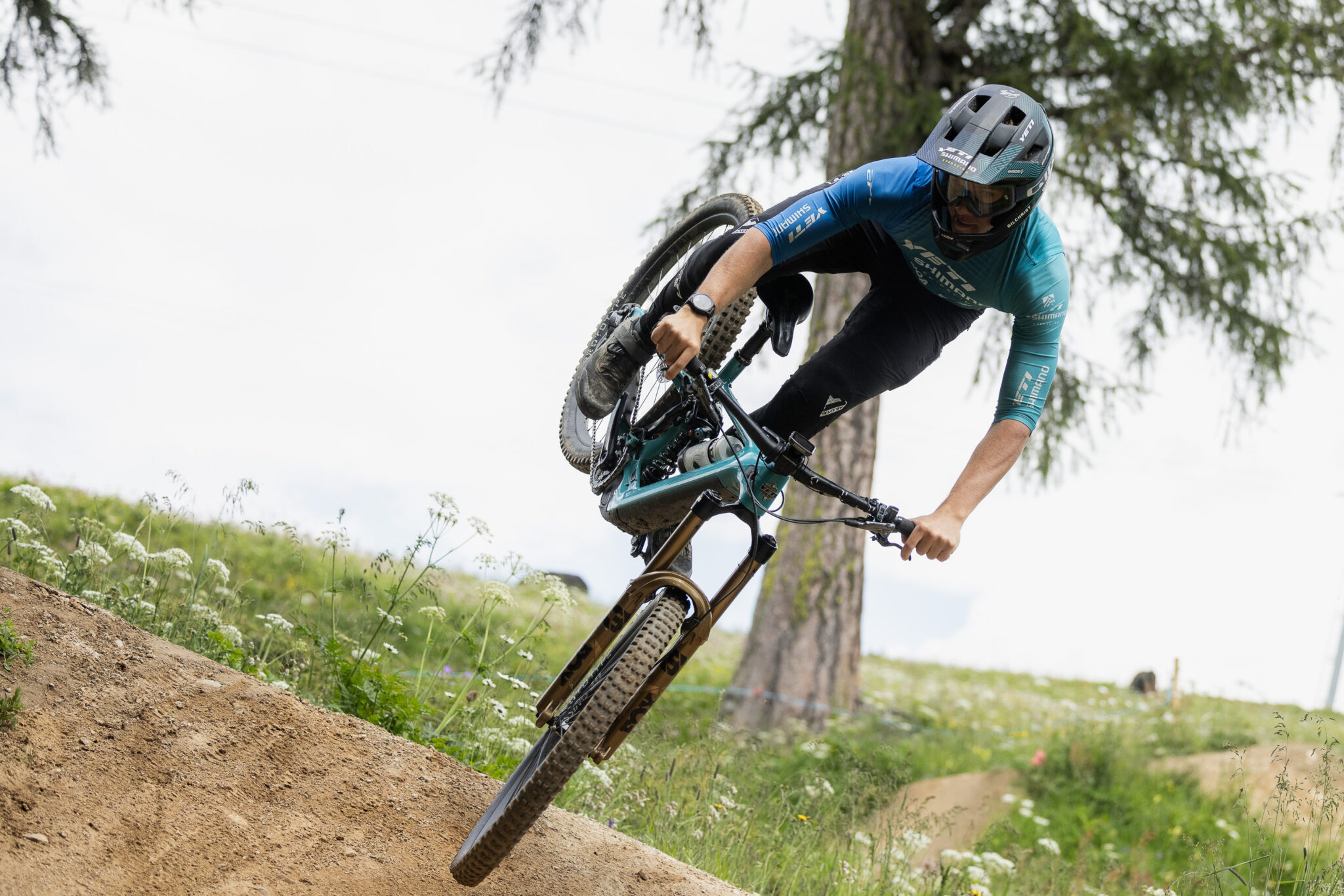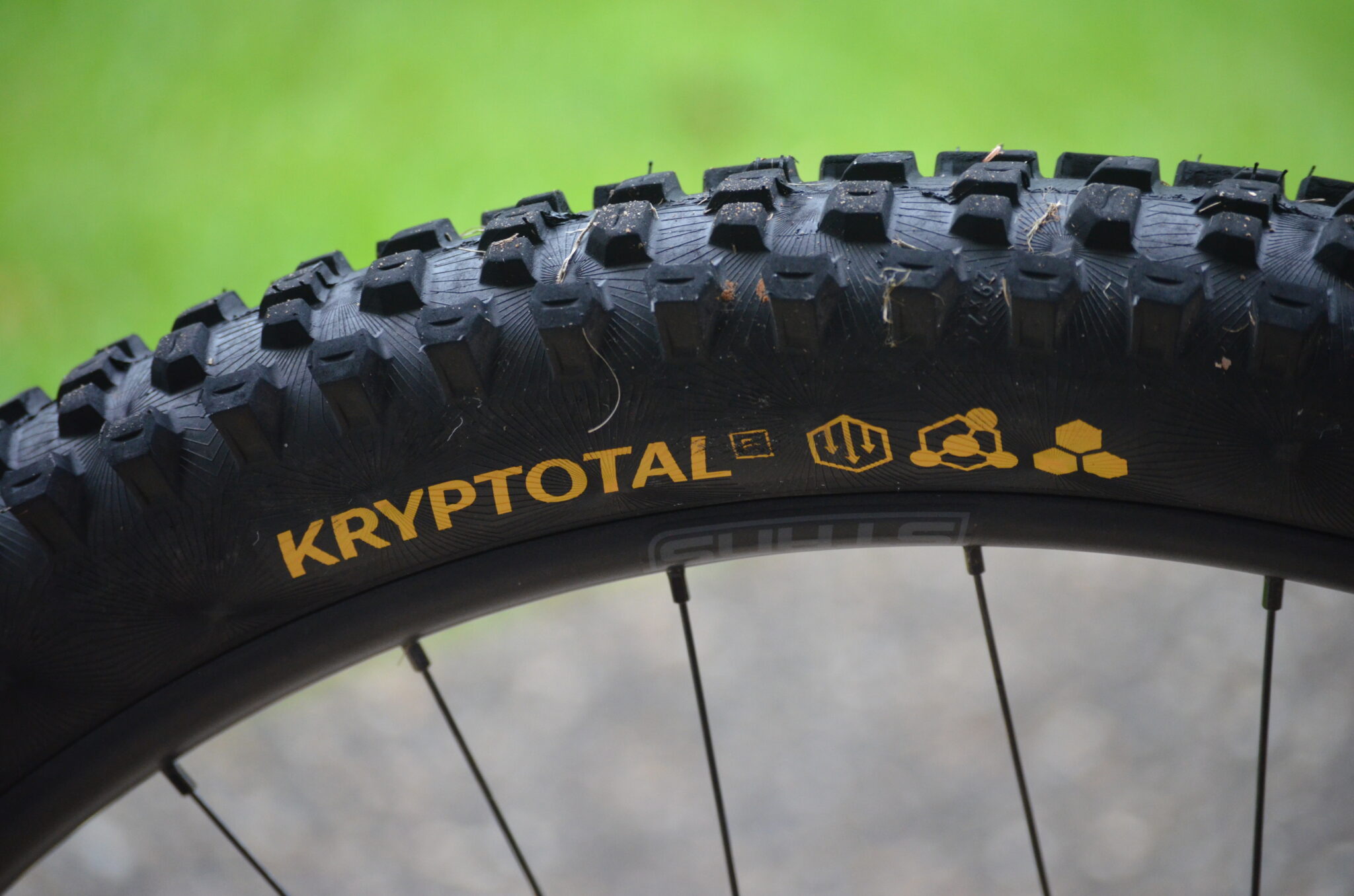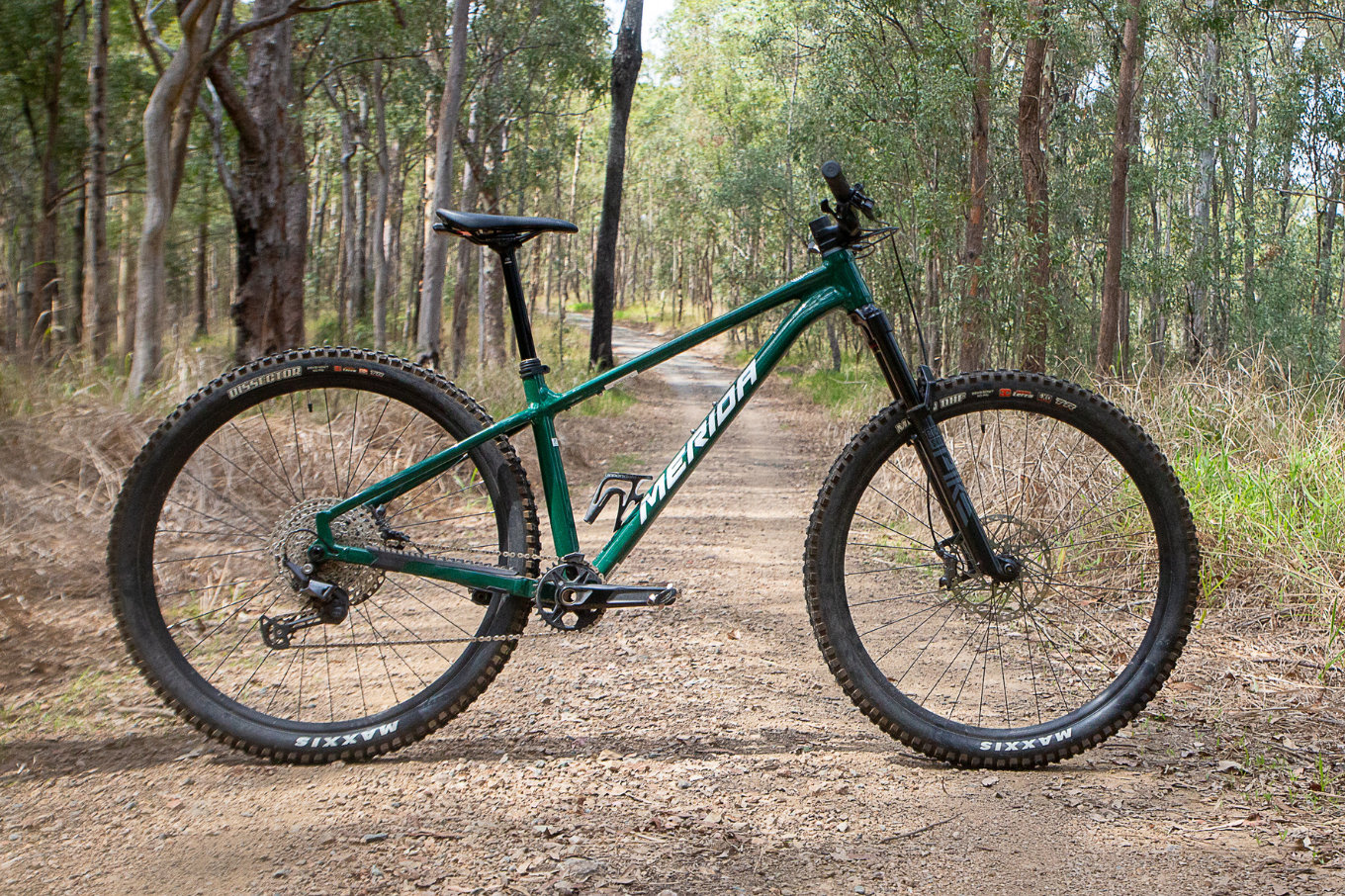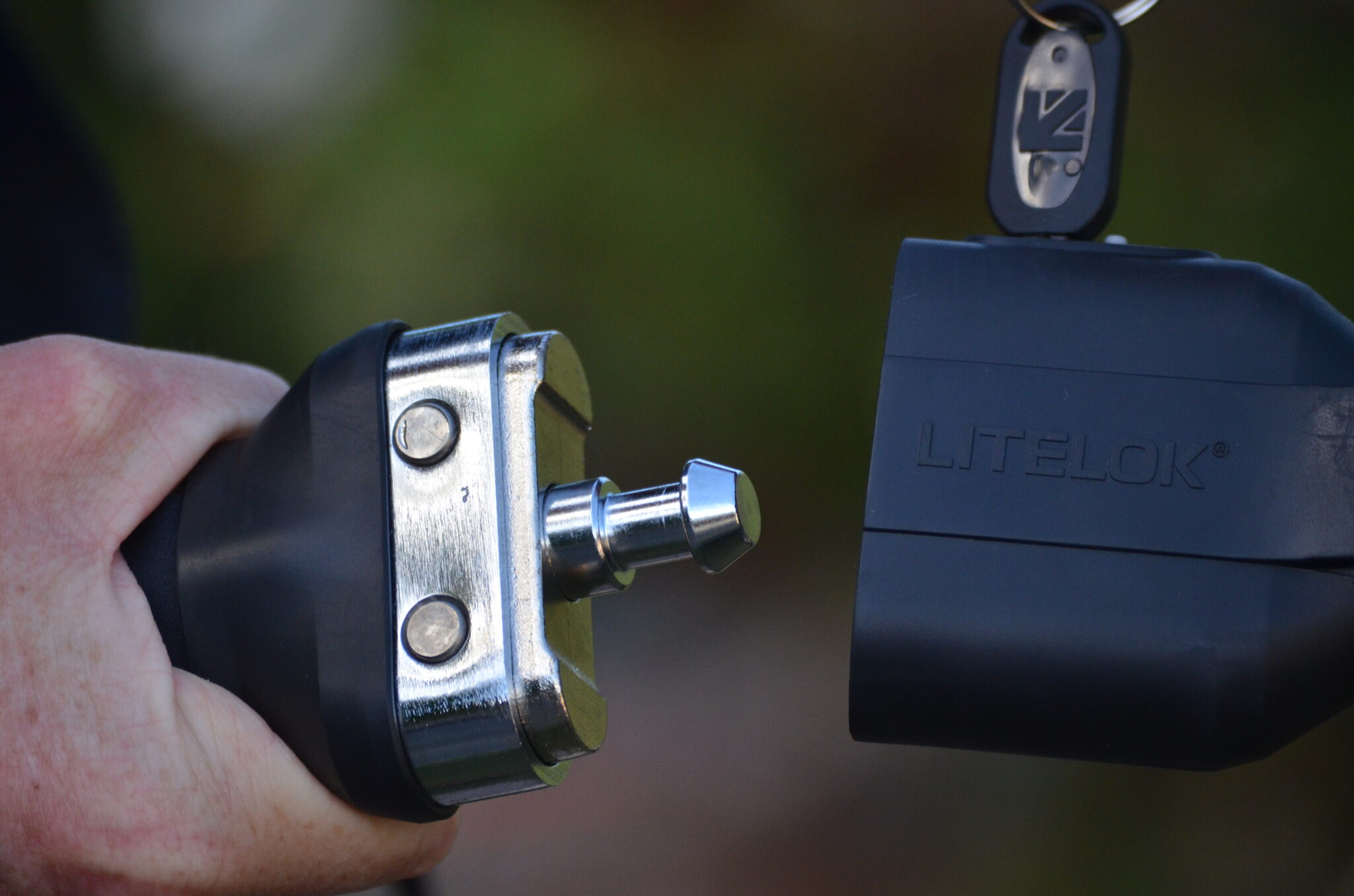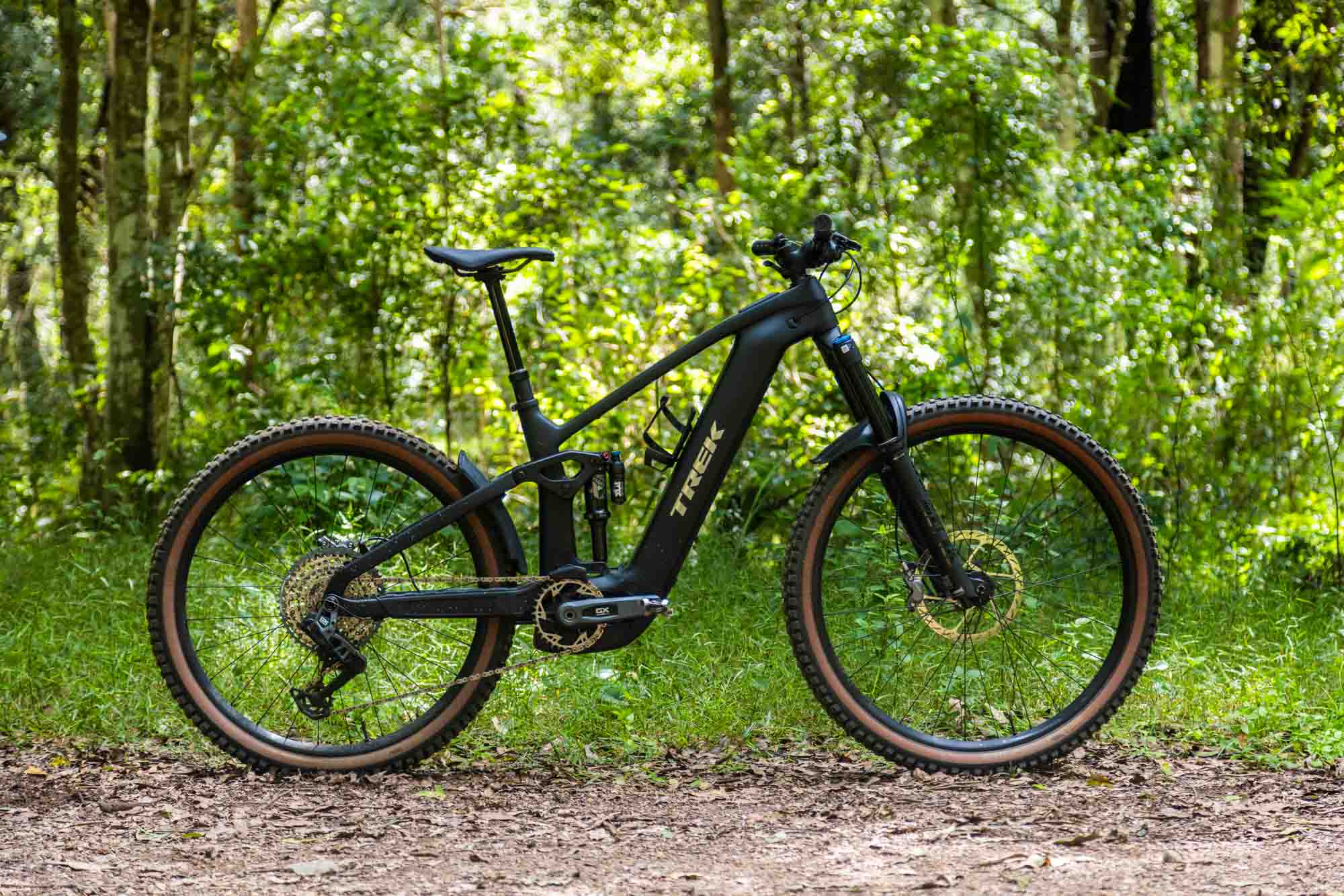TESTED: MERIDA BIG. TRAIL 800
This is not your average hardtail, tune in for some fun times and see just what makes the Merida Big trail succeed.
Mention the name Merida and images of tight lycra-clad XC and road racers immediately spring to mind. Long recognised as one of the largest bicycle brands on the planet, Merida’s recent partnership of Taiwanese manufacturing expertise and German R&D brilliance is quickly redefining the company’s image – jerseys are getting bigger, shorts baggier and smiles wider.
With a major shakedown of their current off-road models already observed (i.e. One-Twenty and One-Sixty bikes), Merida’s Big Trail rolls into new territory with 27.5” wheels bulging. The purpose of Merida’s all new Big Trail is obvious – trail riding! As their first strike into the plus bike campaign, Merida offer two well-equipped and affordable hardtail options; Big Trail 800 ($2,599) and Big Trail 600 ($1,999). We were fortunate to capture the higher spec’d 800 for this review.
The Big Trail is NOT your classic hardtail (so claims Merida’s marketing). As Merida’s first ever B+ hardtail, the Big Trail is aimed at delivering maximum fun on any trail. With modern-day long and slack geometry, a 130mm suspension fork, dropper seatpost (as standard) and extra short chainstays, Merida claim this bike will “put a permanent grin on the face of any trail lover”. A bold statement we were keen to investigate.
For Merida, the main objective of the Big Trail was to create a hardtail that combined fun and safety. Reflected in its geometry and spec, Merida gave the Big Trail a downhill focus, with ride characteristics more akin to a full-suspension trail bike than an XC hardtail.
The Big Trail assumes the frontline position within Merida’s Mid Fat category, doing battle against the likes of Norco’s Fluid and Torrent HT+ and Specialized’s Fuse/Ruze.
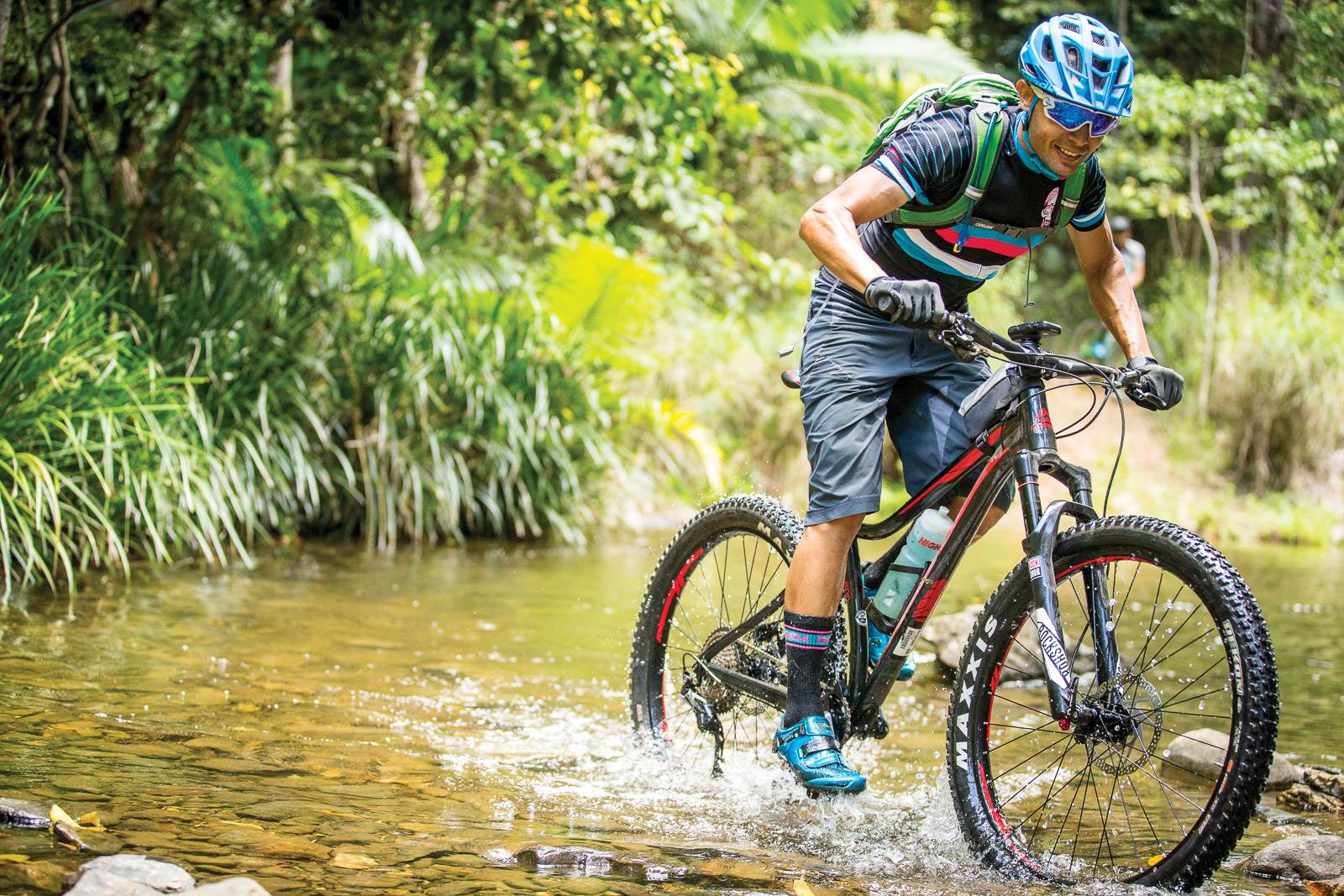
Initial Impressions
Seeing the Big Trail for the first time I was a little confused. I had anticipated wider and beefier tyres attached to an oversized and industrial aluminium frame. Yet, here in front of me was a sleek-looking machine with smooth lines and an abundance of curves (including a heavily hydroformed top tube offering ample stand-over clearance). With a gloss finish of red on black, one could easily overlook the Big Trail (at a distance) as just another hardtail; were it not for the dropper post, aggressively short stem and gargantuan Rockshox Yari RC 130mm suspension fork holding up the front end.
The Big Trail 800 rolls on Merida Expert TP (Alex) rims laced to FoBearing disc boost hubs. According to Merida’s website these are a 520g hookless, sleeved, tubeless-ready rim with an inner bead of 35mm.
As their name implies, the stock Maxxis Rekon+ 27.5×2.8” 3C/EXO/TR tyres are a triple compound, extra side-wall protection, tubeless ready version. The tread pattern is rather aggressive, with widely-spaced knobs; siped on the sides for improved trail handling, and ramped down the middle for increased rolling efficiency. Once inflated onto the Big Trail’s wide rims, the tyres displayed a confidence-inspiring evenly-rounded profile. The claimed weight for these tyres is 825g each.
Aimed squarely at the enduro market, the 35mm chassis of the Rockshox Yari fork is difficult to miss. Only introduced in 2016, the Yari has quickly gained a strong reputation as a solid performer on the gravity scene, with the 27.5” version available in travel increments from 120-180mm. The installed 130mm version was Torque Cap compatible, making use of the larger front hub end cap to offer additional stiffness.
Enhancing its neat and refined appearance, the Big Trail 800 came equipped with a 1x11sp Shimano SLX/XT drivetrain. Thankfully, Merida have appropriately geared the bike with a massive 11-46T cassette matched to a 30T front chainring for a multitude of trail situations. In all honesty, for the entire duration of the test period I thought I was riding a 28Ton the front – such was the optical illusion of the large 46T cog and over-sized tyres.
Clean internal cable routing, including a stealth-routed Merida dropper seatpost, finishes off the frame beautifully, further highlighting its svelte figure in contrast to its overfed tyres. Other notable features of the Big Trail include; a forged bottom bracket area with integrated ISCG 05 mounts, an ISCG-mounted MRP chainguard, built-in rubberized chainstay and down tube protectors, neat and secure cable port covers, and Merida’s own dropper seatpost with shifter-style actuation lever.
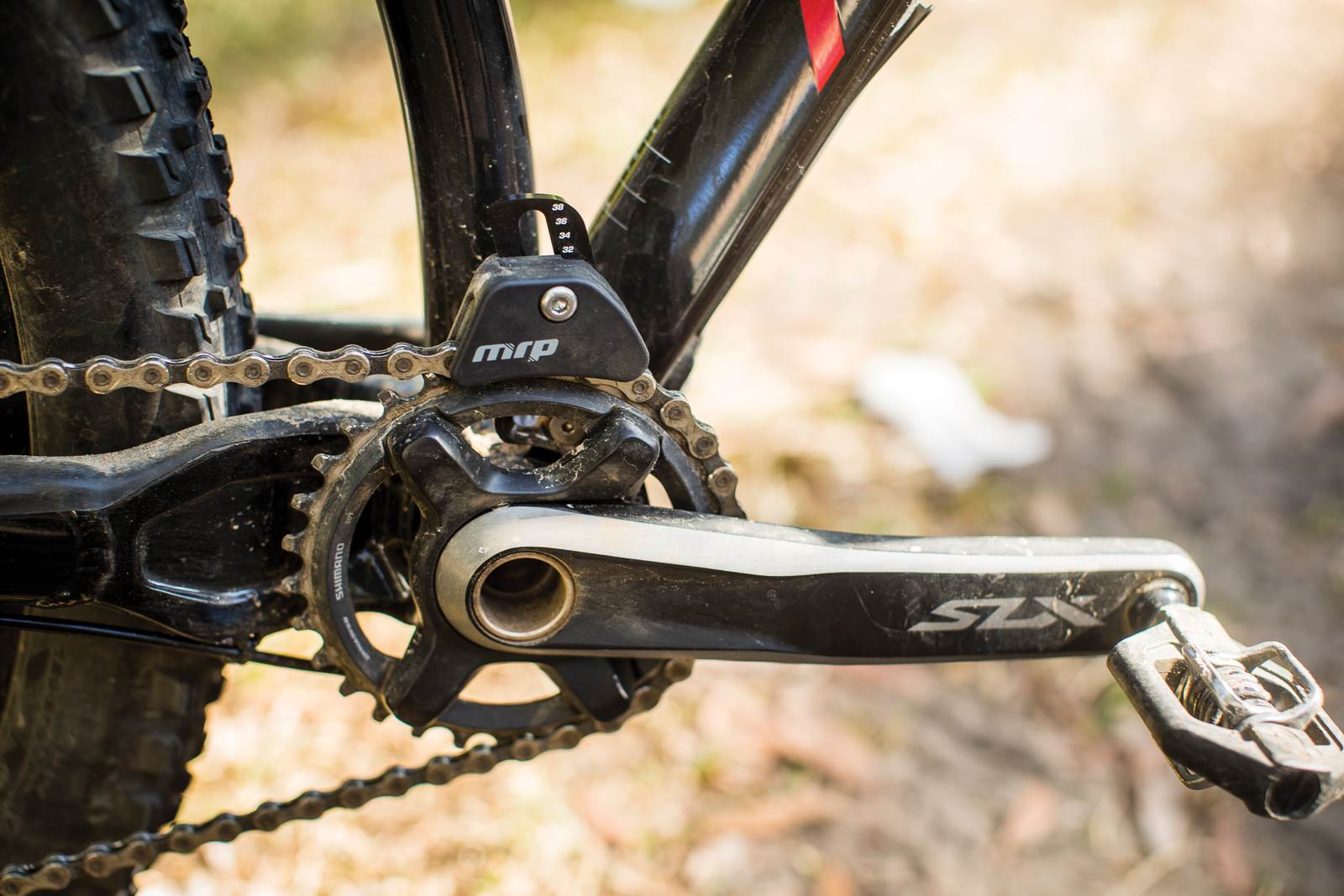
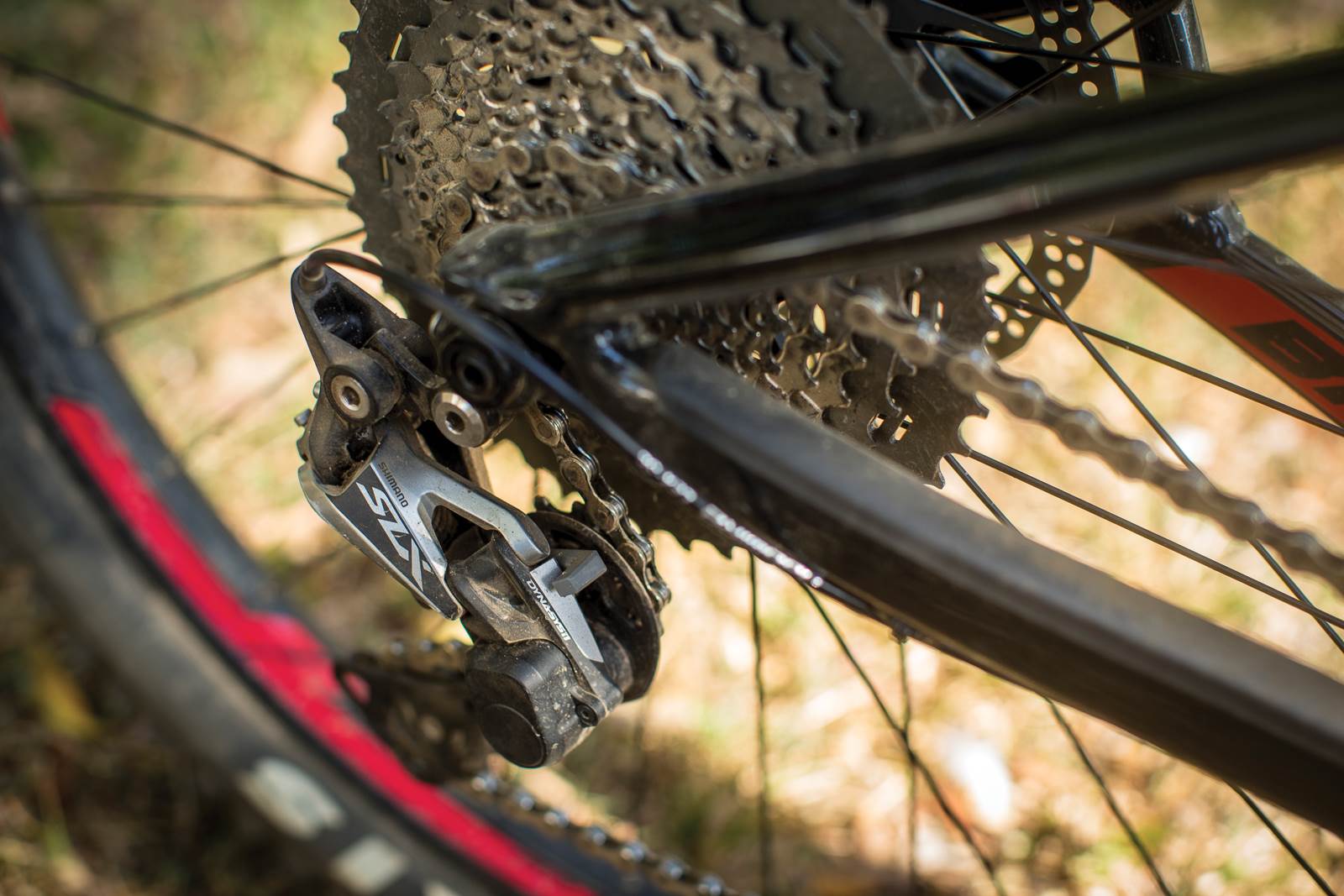
Out of the box our medium Big Trail weighed-in at a healthy 13.45kg. A quick tubeless conversion returned a slightly lighter 12.9kg. In case you’re wondering, the standard rim tape we replaced weighed 30g and the 27.5+ inner tubes a further 397g each. With several long rides scheduled for its first few outings, I did have reservations about the Big Trail. Would the short stem, relaxed geometry and large tyres make for a ‘Driving Miss Daisy’ experience on flat terrain? Would I struggle riding steep or long climbs? Whilst not the desired intention of its designers, I did want to immerse the Big Trail in the full Far Northern experience (river crossings included).
On The Trail
Much to the disgust of its designers (no doubt), my first ride on the Big Trail was a 33km roll down the Atherton-Mareeba Rail Trail as part of AMB’s four-day bikepacking experience in the Tropical North. With tyre pressures set around 19psi, and the fork adjusted for my sub-60kg bulking mass, we set-off down the wide open and fast rail corridor.
My concerns about the upright riding position were quickly distracted by the beautiful rolling pastures of the Tablelands. Spinning the plus wheels up to speed on the flat terrain did require a little extra effort, though the energy saved in maintaining momentum more than made up for the added weight. Glancing down at my Garmin I noticed we were cruising at over 30km/h, the cool country wind in our faces and the crunching of gravel under our wide tyres. Life was good.
As the quality of the trail surface degraded, the capability of the plus tyres became more pronounced, soaking up inconsistencies underneath me like suspension. Several times I had to remind myself that I was indeed riding aboard a hardtail. It wasn’t until we hit a section of double-fist sized rocks that my non-tubeless setup became apparent – but that’s another story! On the flipside, we found that 29”+ tubes work just the same in 27.5”+ wheels.
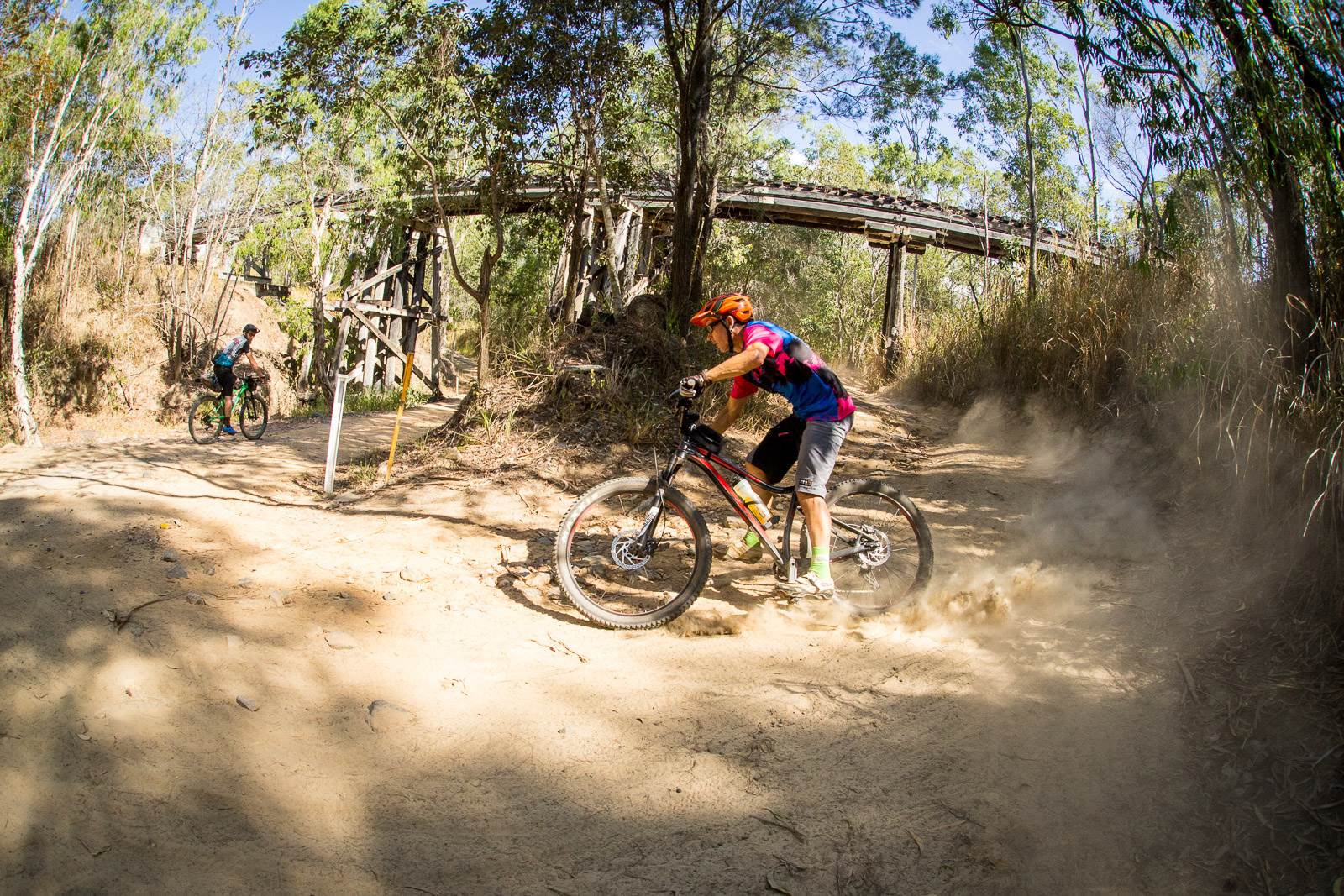
The final few kilometres into Mareeba presented sections of soft, energy-sapping sand dispersed throughout the gravel. Thanks to the larger footprint and floatation of the plus-sized tyres, the Big Trail tore through these repeated sections until we reached tarmac and the coffee shop beyond.
The following day brought with it the excitement of getting lost in the rainforest trails above Cairns. My day started with an 8km bitumen climb under the baking sun to meet the others. Yes, I did suffer more on the climb than I had anticipated. However, once off-road and under the jungle canopy the pain quickly gave way to pleasure as the trail narrowed and the rainforest engulfed us.
It was here that I developed an appreciation for Merida’s dropper post with its 115mm (measured) of travel and ergonomic shifter-style lever. Compared to the hydraulic button on my Rockshox Reverb, the Merida was intuitive and required less force to operate (allowing for greater control on the handlebars). Whilst I have been riding a 1x setup for many years now, my left thumb still remembered where to find the lever and what to do with it.
Descending through the jungle, I had never felt as safe on a bike as I did on the Big Trail. It wasn’t until a wait-a-while vine jumped out and grabbed us that the soundtrack in my head stopped, and reality set in. The jungle must always be respected or it will bite back.
About halfway along the trail we came to a large, knee-deep (on me) creek crossing which I had never successfully crossed by bike. With the added confidence of the Big Trail underneath me (and a photographer on the other side waiting), I shifted up a few gears and gently submerged myself into the cool flowing water below. Unlike the buoyancy of a fat bike, the plus wheels remained firmly planted on the river rocks below. Before I realised it, I was already halfway across. The Big Trail made such easy work of the crossing that I had time to shift down, then up a few gears and give a running commentary of my experience as I pedalled effortlessly across. Once on the other side I looked back in awe at how easy it had been. What else could the Big Trail do?
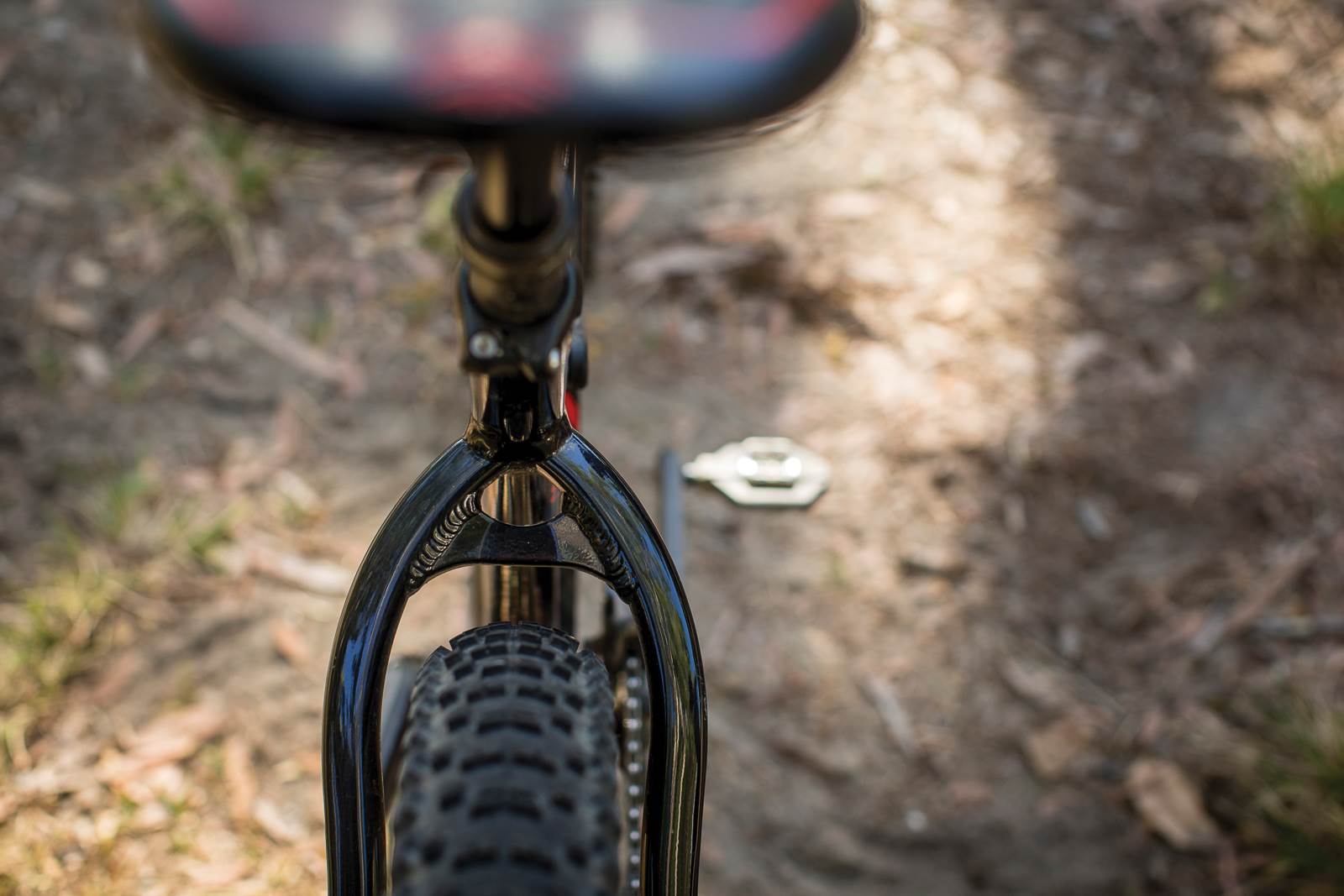
Following the bikepacking adventure, I spent a few quality days on the singletrack at Davies Creek whose weathered granitic substrate would surely be a suitable test of grip. With a tubeless set-up installed this time, I lowered the pressure to 13psi front and 15psi rear. Again, I was amazed at the increased comfort level and the way in which the Rekon+ tyres clawed at the loose ground. I felt faster and more in control on the loose downhill sections than I did on my full-suspension trail bike. The more I rode the Big Trail, the more I grinned.
For its final outing I decided on a few hours at Atherton Forest Mountain Bike Park, home to steeper climbs, longer descents and rougher, rockier trails.
At the trailhead I lowered my pressures even further; 10psi front and 13psi rear. Having been rather conservative thus far, I wanted to see how low I could take it. My first lap of the park included some steep climbs, which the 46T cog devoured. The stability of the bike, its low gearing and outrageous traction again proved that nothing was impossible. Not once did I spin the rear wheel or lift the front end. No, you won’t win any hill climbs on the Big Trail, but you will climb trails most bikes simply can’t. Even tight switchback corners didn’t present a challenge.
On the large rockier sections the Big Trail simply ploughed its way up and over with ease. There was never a need to get out of the saddle and push hard on the Big Trail, I simply shifted up a gear and let the wheels do the talking. At these low pressures, though, tyre squirm was noticeable and I did manage to feel the rim a few times, so I returned to the carpark to top the tyres back up to 13/15psi again.
With downhill in its DNA, it was finally time to set the Big Trail free. As impressed as I was with the Big Trail’s climbing prowess, I was astounded by its fondness for gravity. My initial instincts to guide the Big Trail around and through sections was soon replaced by reckless abandon. With the Yari fork in control I destroyed rock gardens, unearthed tree roots and railed eroded berms. The Big Trail didn’t care about the terrain, it just wanted to go fast – crazy fast! How could a hardtail ride so damn well?
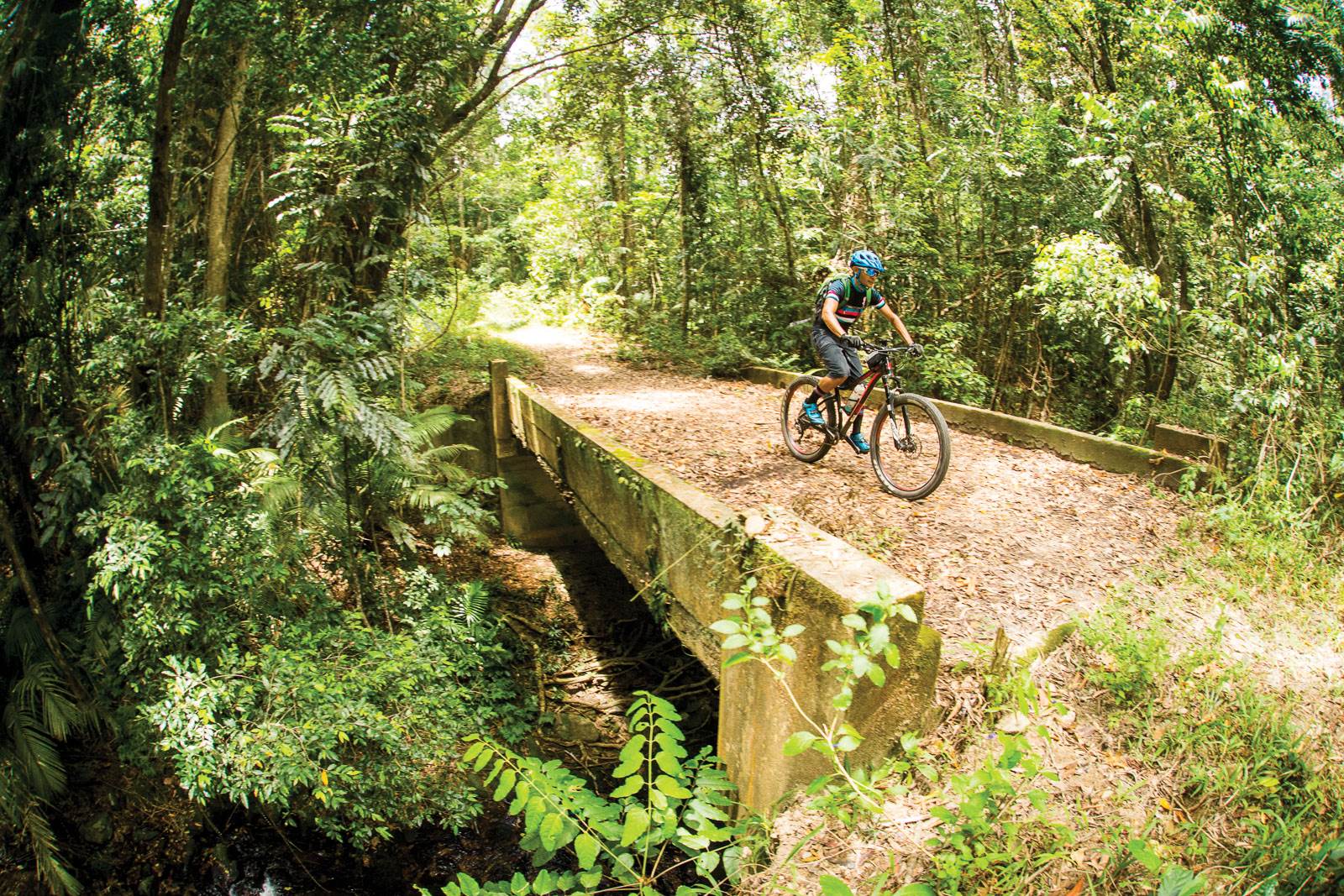
Our Take
Merida were correct in saying this is NOT your classic hardtail.
Aimed at producing maximum fun on any trail is a bold statement to make, but one Merida have delivered. As a gravity-defying sled the Big Trail excels. Whilst not the fastest climber, the Big Trail will get you to the top whichever line you choose to take. Being a hardtail, it requires limited service and upkeep, yet offers unquestionable forgiveness and comfort out on the trail.
Gear ratios on a bike are very important, and none more so than on the Big Trail. Again, Merida have nailed it for Aussie riders.
For a bike this capable, it would be great to see a second bottle cage mount added to the frame so you could ride longer and harder. My time on flat terrain has proven the Big Trail’s ability to cover long distances comfortably, making it a capable bikepacking rig for shorter outings (only limited by its small frame space).
It is unfortunate to think that many riders will overlook the Big Trail based purely upon appearance, I know I almost did. However, if one takes the opportunity to ride the Big Trail the smile will tell the story. Every time I think about my time on the Big Trail I grin.
| Brand | Merida |
| Model | Big Trail 800 |
| RRP | $2599 |
| Weight | 12.9kg ( as tested) |
| From | advance traders |

